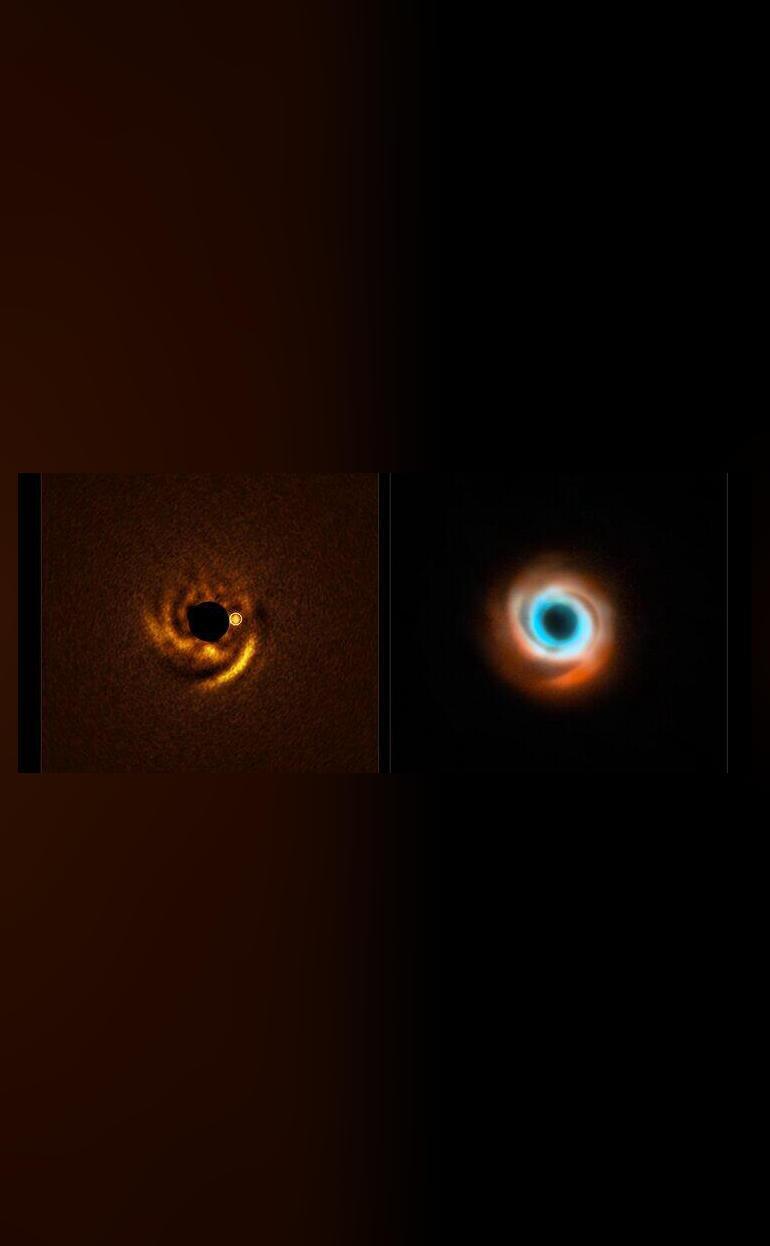
Astronomers Witness Newborn Planet Sculpting the Dust Around It
The universe is a vast and wondrous place, full of mysteries waiting to be unraveled. One of the most fascinating and complex areas of study is the process of planet formation. Astronomers have long been fascinated by the ways in which planets come to be, and the latest discovery is set to shed new light on this process.
Using the European Southern Observatory’s (ESO) Very Large Telescope (VLT), a team of astronomers has made a groundbreaking detection of a planet candidate embedded within a disc spiral. This marks the first-ever detection of a planet nestled in the inner regions of a spiral arm, providing a unique glimpse into the early stages of planet formation.
The discovery was made by a team led by Dr. Takashi Tsukagoshi, a researcher at the University of Cambridge. The team used the VLT to observe a planetary disc surrounding a young star, known as HD 163296. This star is located approximately 330 light-years from Earth, in the constellation of Ophiuchus.
The team was able to capture high-resolution images of the disc using the VLT’s SPHERE instrument, which is capable of producing incredibly detailed images of celestial objects. The images revealed a stunning spiral pattern, with the planet candidate located at the inner edge of the spiral arm.
“This is a major breakthrough in our understanding of planet formation,” said Dr. Tsukagoshi. “We’ve never seen a planet so clearly embedded within a spiral arm before. It’s like watching a newborn planet sculpting the dust around it.”
The discovery is significant because it provides a unique opportunity to study the early stages of planet formation. The planet candidate is estimated to be around 10-20 million years old, which is relatively young in astronomical terms. This means that the team can observe the planet in the process of forming, and gain valuable insights into the mechanisms that govern this process.
The spiral pattern observed in the disc is thought to be caused by the gravitational influence of the planet candidate. As the planet orbits the star, it creates a disturbance in the surrounding disc, causing the gas and dust to swirl into a spiral shape.
“This is a major step forward in our understanding of how planets form,” said Dr. Tsukagoshi. “We’re witnessing the process of planet formation in action, and it’s an incredible privilege to be able to study it so closely.”
The discovery has significant implications for our understanding of the universe. It suggests that the process of planet formation is more complex and dynamic than previously thought, and that planets may play a more active role in shaping their surroundings than was previously believed.
The team’s findings have been published in the journal Astronomy & Astrophysics, and are set to be presented at the International Astronomical Union’s General Assembly in August.
The ESO’s VLT is one of the world’s most powerful telescopes, and has made numerous groundbreaking discoveries over the years. The SPHERE instrument is a state-of-the-art imaging device that is capable of producing incredibly detailed images of celestial objects.
“This is a fantastic example of the kind of cutting-edge science that the ESO’s VLT is capable of,” said Dr. Thomas Henning, the ESO’s Director of Science. “We’re thrilled to be a part of this exciting discovery, and we look forward to seeing what other secrets the universe holds.”
In conclusion, the discovery of a planet candidate embedded within a disc spiral is a major breakthrough in our understanding of planet formation. The ESO’s VLT has provided a unique glimpse into the early stages of planet formation, and has shed new light on the complex mechanisms that govern this process.
As we continue to study the universe and its many mysteries, we are constantly reminded of the awe-inspiring beauty and complexity of the cosmos. The discovery of this newborn planet is a powerful reminder of the wonders that await us, and we can’t wait to see what other secrets the universe holds.






